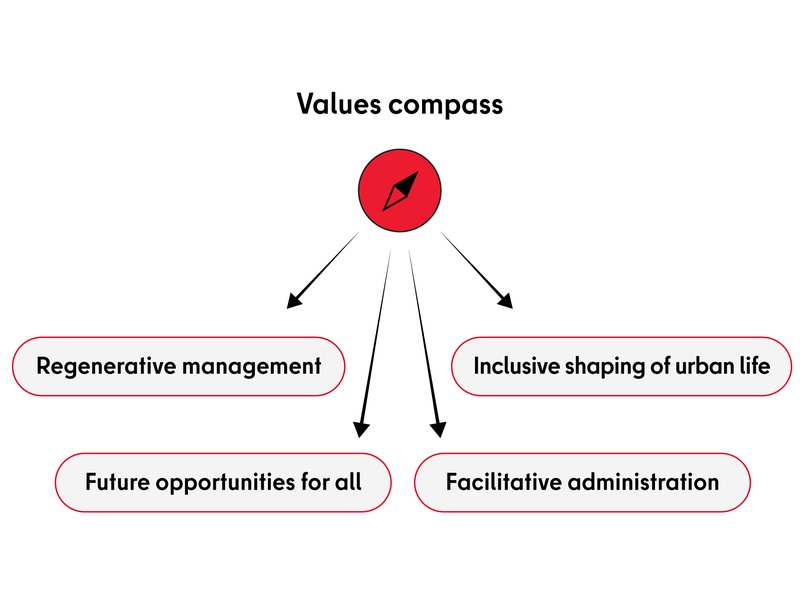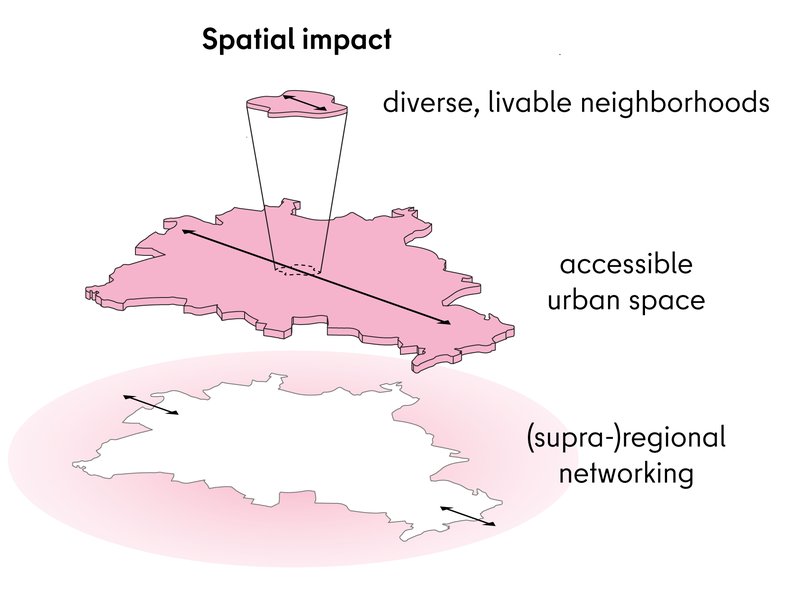In Berlin there is no one center but numerous small districts and neighborhoods in which Berlin residents spend their day-to-day lives and pursue all essential activities. GD:B activities strengthen life in the immediate surroundings of all Berlin residents, both in the city center and in the outer districts, thereby contributing to the implementation of the 15-minute city* for everyone.[21]
At the neighborhood level, the measures therefore make a contribution in that people are to find a livable, diverse and safe environment on their doorstep. Neighborhoods are strengthened as places of cooperation and innovation for sustainable and inclusive urban development. Developments promote local involvement and self-efficacy among residents.
To this end, the goals of sustainable urban development are taken up in the various fields of action and further developed using digital means. In this way, neighborhoods become local spaces for interaction and innovation. This approach of an engaged city seeks to strengthen local autonomy and agility on a small scale, while remaining compatible with larger structures such as the districts, state or region. This is because solutions to global challenges can be tried out and validated on a small scale, especially when digital infrastructures enable quick and easy comparison with other local projects. The next step is to scale up successful approaches in other districts, in the city-wide or on a (supra-)regional basis.



